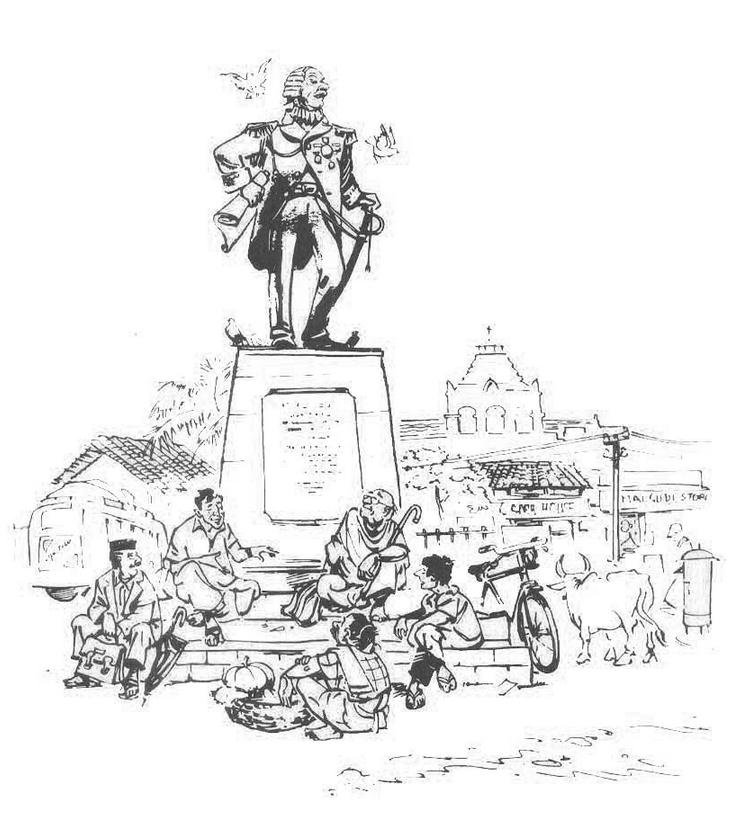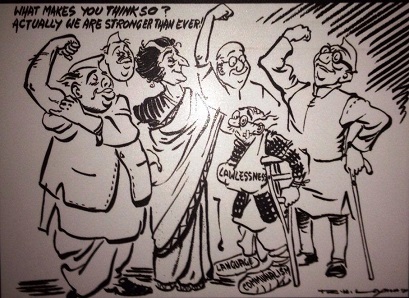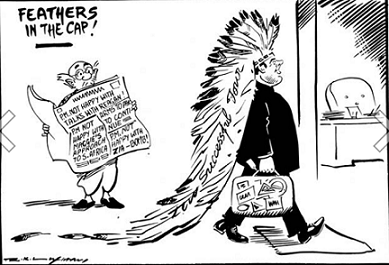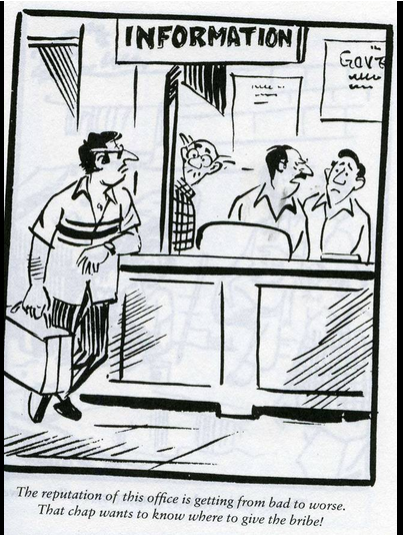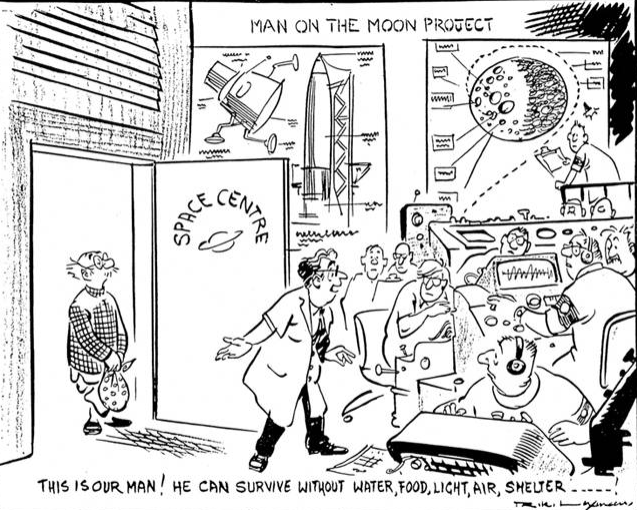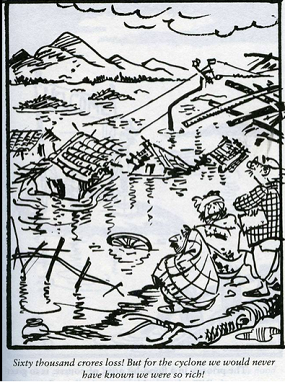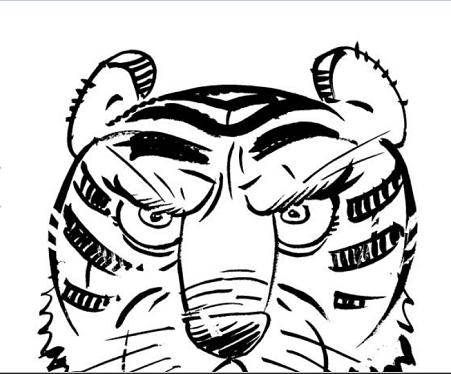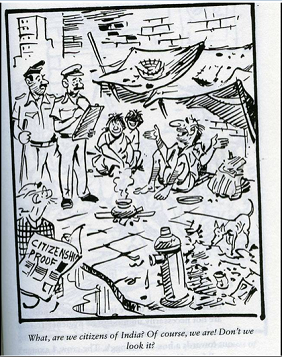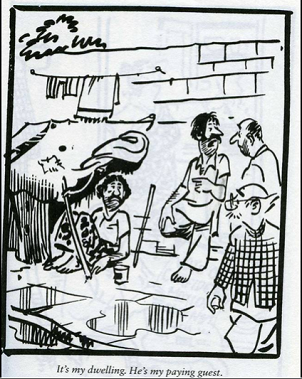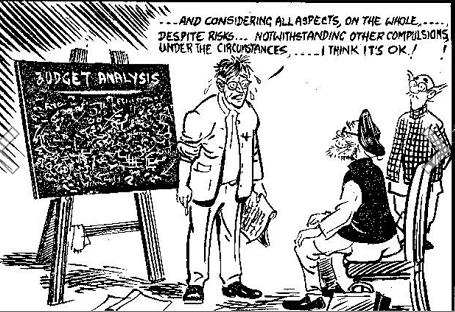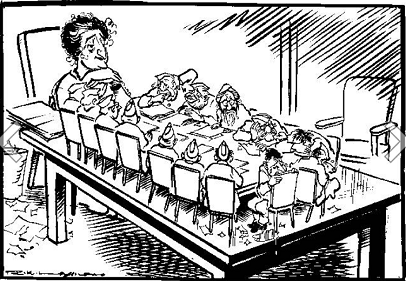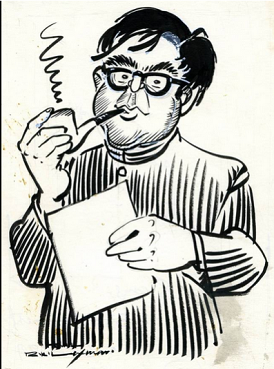R.K. Laxman
(→His work) |
(→Source) |
||
| Line 8: | Line 8: | ||
[[Category:India |L ]] | [[Category:India |L ]] | ||
[[Category:Culture & Learning |L ]] | [[Category:Culture & Learning |L ]] | ||
| − | = | + | =The sources of the cartoons include...= |
[[File: Malgudi.jpg|An uncommon rendition of a common village, Laxman brought alive [his brother R.K.] Narayan's vision of Malgudi |frame|500px]] | [[File: Malgudi.jpg|An uncommon rendition of a common village, Laxman brought alive [his brother R.K.] Narayan's vision of Malgudi |frame|500px]] | ||
| + | [[File: Economics.jpg|Laxman’s cartoon shows PM Sh PV Narasimha Rao and Finance Minister Manmohan Singh. They—and not Laxman—were proved right. They led India to unprecedented prosperity. |frame|500px]] | ||
| + | [[File: IG lawlessness.jpg|. L-R: Sh Jagjivan Ram, ?, MrsIndira Gandhi, ?, Mr Morarji Desai and, of course, the common man |frame|500px]] | ||
[[File: RKLaxman.png| RK Laxman (1921-2015): The common man|frame|500px]] | [[File: RKLaxman.png| RK Laxman (1921-2015): The common man|frame|500px]] | ||
[[File: RKLaxman1.png| RK Laxman (1921-2015): Rajiv Gandhi|frame|500px]] | [[File: RKLaxman1.png| RK Laxman (1921-2015): Rajiv Gandhi|frame|500px]] | ||
Revision as of 22:39, 26 January 2015
This is a collection of articles archived for the excellence of their content. |
The sources of the cartoons include...
Best of RK Laxman's cartoons The Times of India
The man
R K Laxman, nation's uncrowned conscience keeper
Laxman, the youngest of six siblings, was born Oct 24, 1921, in Mysore. He showed promise very early in life. The illustrations in The Strand, Punch, Bystander and Tit-Bits, reputed British magazines, spurred his innate talent which found an outlet in his own house. He drew on its floor, walls and doors, sketched caricatures of his school teachers. Sir David Low, the world-famous cartoonist whose sketches also appeared in the Hindu, also influenced him.
R K Laxman, considered by many as one of the world's greatest cartoonists, was an institution unto himself, indisputably the uncrowned conscience keeper of the nation. No politician or minister, however high or mighty, escaped his pointed satire, conveyed through a few deft strokes of his brush, especially if they committed an act of impropriety or indiscretion.
Laxman's 'common man', who graced the front pages of The Times of India for more than five decades, under "You Said It" acquired an iconic stature of its own. These pocket cartoons not only conveyed the pulse of a nation, but also unfailingly delivered powerful messages. At the same time they mirrored the hopes and aspirations, follies and foibles of a society in transition.
The cartoons of Laxman became the defining moments in nation's history, as for instance, the one on Aryabhatta, India's first satellite. A couple of middle-aged office-goers are waiting at a bus stop. One of them wants to know the time. As soon as the other looks at his watch and answers, the questioner looks skywards, exclaims: "Aryabhatta must have completed one orbit by now."
His huge canvas spanned local, national and global personalities and issues, born out of his deep understanding of the cross currents shaping the world. His take on Angolan crisis in which both the super powers fought through proxies, at the height of the Cold War, shall remain among his many unforgettable cartoons.
The three-column illustration depicts Leonid Brezhnev and Jimmy Carter, presidents of erstwhile USSR and US, who are stealthily stepping across the coast of Angola, both armed and in the guise of burglars. Carter cries "thief-thief" as soon as he spots his burly opposite number. It exposes their double-speak and evokes laughter at the irony. These cartoons speak volumes about Laxman's capacity to convey complex geopolitical realities in his characteristic style.
Laxman's cartoons, undoubtedly the outcome of a brilliant mind, also entailed sheer hard work. It meant isolating himself for six hour daily, neither speaking nor listening to anyone during the period. "Searching for new ideas is an endless process. You have to come up with new and innovative idea each day," he said.
Some of the tomes showcasing Laxman's perspective also include the one which appeared just after the 1971 India-Pakistan war, in three columns, in his inimitable style. General Yayha Khan, pointing to the stack of destroyed Pakistani tanks and planes in the background, tells Zulfikar Ali Bhutto, with a smile: "Have I not made it seem like a thousand-year war," (which only lasted 14 days). Bhutto often boasted about waging a millennial war against India.
His work
Laxman immortalized passive, hapless common man
PTI | Jan 26, 2015 The Times of India
Capturing the entire gamut of idiosyncrasies of Indian politicians in an innocuous newspaper box with his cartoons, R K Laxman immortalized the passive, hapless common man with an uncanny perception and sarcasm in a daily commentary on his life that brought smiles to millions.
Every morning for over five decades, his fans waited for the 'common man' who, with his signature checked jacket, dhoti, Gandhi-glasses and twin tufts of gravity-defying hair, watched life and politics in India.
With his masterful strokes using the space of couple of inches, he exposed the hypocrisy in politics, leaving many a politician red-faced.
The son of a school teacher, Rasipuram Krishnaswamy Laxman, who rose to become India's best known political cartoonist, was born in Mysore on October 24, 1921. He was one of the seven siblings that included his elder brother eminent novelist R K Narayan.
With a penchant for drawing since his school days, Laxman was engrossed by the illustrations in magazines such as "Punch", " Tit-Bits", " Strand" and " Bystander" and came under an early influence of world renowned British cartoonist Sir David Low.
A creative genius, Laxman was known to have started doodling even before he could read, using floors, walls and doors of his house.
His artistic bent of mind was appreciated by a school teacher who noticed a drawing by him on a peepal leaf.
In his autobiography "The Tunnel of Time", the legendary cartoonist recalls, "I drew objects that caught my eye outside the widow of my room--- the dry twigs, leaves and lizard like creatures crawling about, the servant chopping firewood and of course, the number of crows in various postures on the rooftops of the buildings opposite?".
The crow was also a common figure in his cartoons later on.
Overcoming the setback in the death of his father, the young Laxman completed high school education and sought admission to Mumbai's J J School of Arts.
Ironically his application was rejected by the dean who remarked that his drawings "lacked the kind of talent required to qualify for enrolment in our institution as a student".
Laxman subsequently graduated with a Bachelor of Arts from University of Mysore even as he continued with freelancing and contributed cartoons to " Blitz", " Swarajya" and an animated film based on the mythological character of "Narada".
While at the Maharaja's College of Mysore, Laxman started illustrating R K Narayan's short stories in 'The Hindu' and also drawing political cartoons for local newspapers and a Kannada magazine devoted to humour titled " Koravanji", founded in 1942 by Dr M.Shivaram who encouraged the budding cartoonist. When he took up his first full time job as a political cartoonist at Mumbai's Free Press Journal, Laxman incidentally found himself in the company of Bal Thackeray who too worked in the same paper as a cartoonist for a brief period.
But his legendary spell on the Indian newspaper reader was cast after joining the Times Of India (TOI).
The comic strip "You said it" started in 1951, unleashing his iconic "common man", a silent witness to the shenanigans of politicians who were supposed to realise his dreams, hopes and aspirations but betrayed him on most occasions.
His association with TOI continued through the six decades even as he got back to work after recovering from a paralytic stroke in 2003 that incapacitated his left side.
A versatile artist, Laxman also wrote novels - Hotel Riviera and the Messenger, published by Penguin and contributed distinctive illustrations to many works including the "Malgudi Days" stories penned by his brother R K Narayan.
His autobiography in English "The Tunnel of Time' is translated into Marathi under title "Laxmanrekha". In a fitting tribute to the "Common Man" who attained a cult status, a commemorative postal stamp was issued featuring it in 1988 on the occasion of the 150th anniversary of TOI.
Among the honours bestowed on the cartoonist are B D Goenka award-Indian Express, Durga Ratan Gold medal - Hindustan Times, Padma Bhushan, Padma Vibhushan and the Magsaysay award in 1984 for Journalism, Literature and creative communication arts.
Laxman, married to author Kamala, later settled down at his Pune residence from where he continued his work. A 16 ft. bronze statue of the 'Common Man", sculpted by Vivek Khatavkar, was unveiled in the premises of the Symbiosis Institute here on December 19, 2001 in the presence of its creator.
